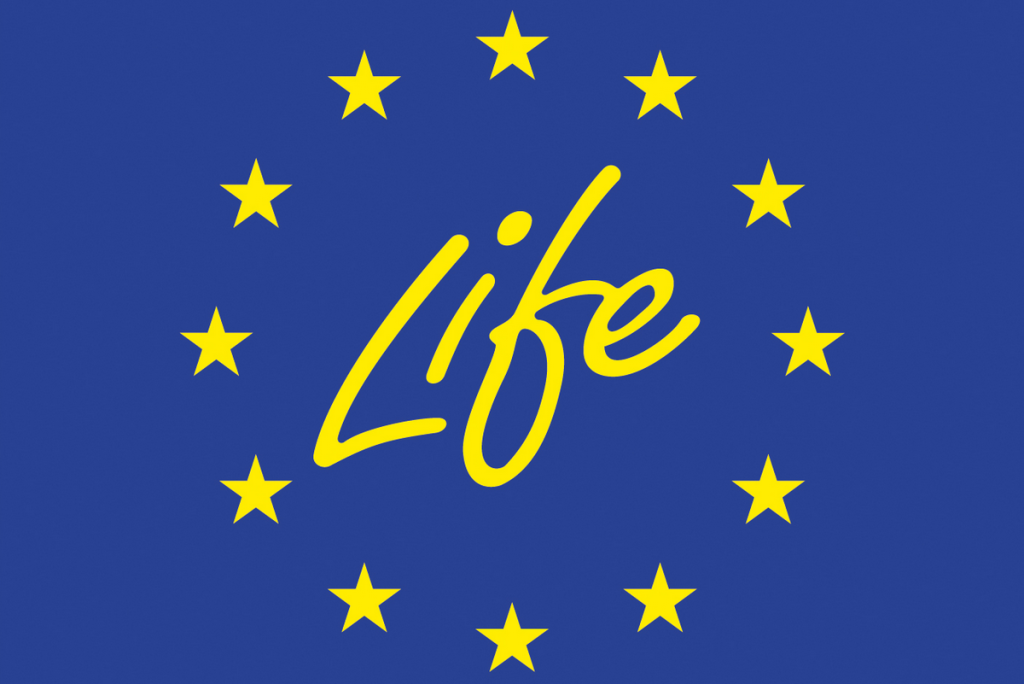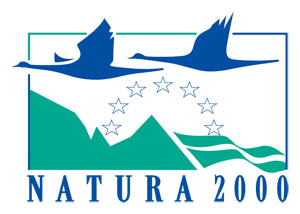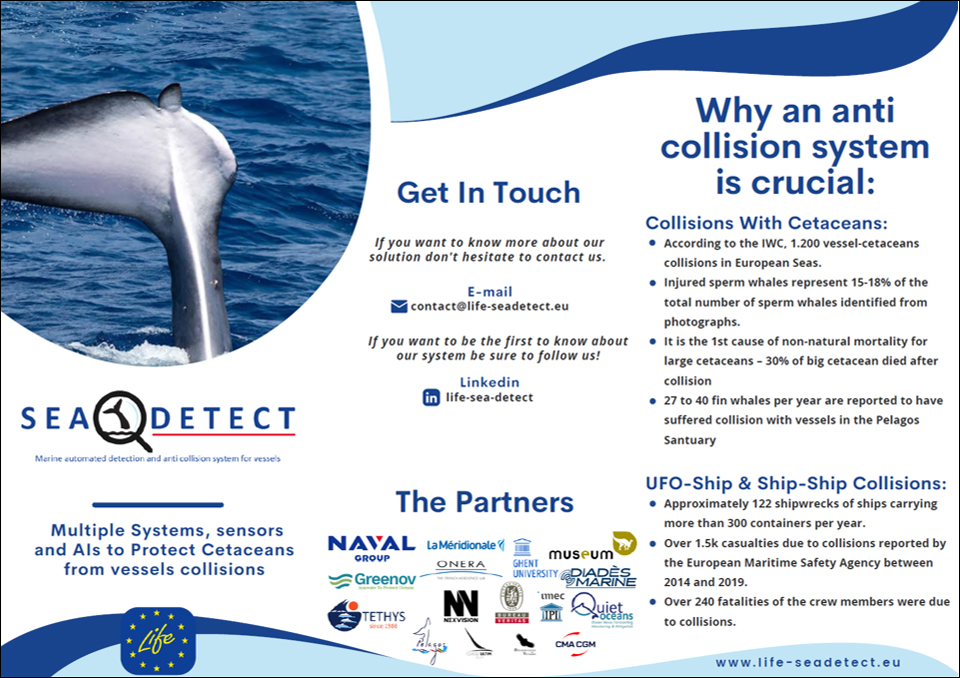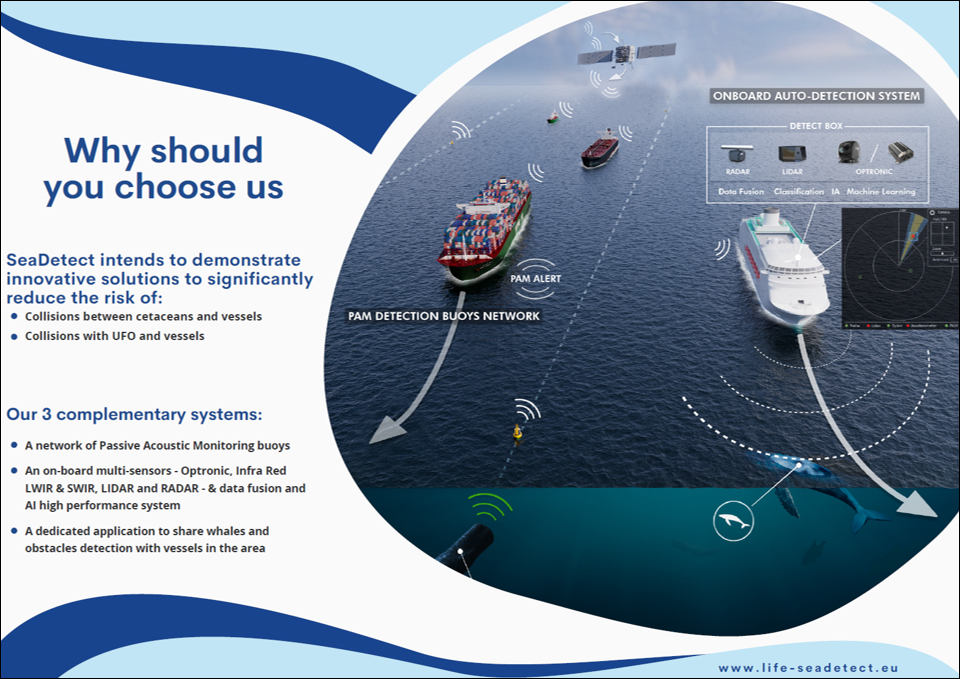- Accueil
- Life Seadetect
Life Seadetect

 LIFE SEADETECT aims to halt the biodiversity loss due to shipstrikes with cetaceans - being the first non-natural threat to large cetaceans’ lives - by implementing and developing new technologies. To considerably reduce this risk of collision, the SEADETECT project aims to develop two innovative systems that can ensure the detection of the cetaceans with a radius range of 1 km in most of the weather conditions, day and night in real-time. These range of detection is sufficient for high speed/high collision risk vessels to change their trajectory in order to avoid the collision with cetaceans. The systems will be compound of:
LIFE SEADETECT aims to halt the biodiversity loss due to shipstrikes with cetaceans - being the first non-natural threat to large cetaceans’ lives - by implementing and developing new technologies. To considerably reduce this risk of collision, the SEADETECT project aims to develop two innovative systems that can ensure the detection of the cetaceans with a radius range of 1 km in most of the weather conditions, day and night in real-time. These range of detection is sufficient for high speed/high collision risk vessels to change their trajectory in order to avoid the collision with cetaceans. The systems will be compound of:
- An on-board system with multiple high sensitive complementary sensors that will be fused and processed with artificial intelligence in order to allow equipped vessels to self-detect cetaceans.
- A network of Passive Acoustic Monitoring (PAM) buoys that will detect and triangulate the position of cetaceans in real-time in order to prevent collision for all vessels in usual maritime roads.

Obtained detections will feed REPCET sharing detection software to inform equipped vessels of the risk of collision. Within the SEADETECT project, three consecutive demonstration campaigns will be led to evaluate the on-board system for a total period of 3 years. This system will be deployed on specific vessels that represent the highest risk of collision with cetaceans: Two demonstration campaigns of 6 months for the PAM system during the summer (i.e. most dangerous period for shipstrikes) in critical areas (shipstrikes).
Huge dissemination and communication actions will be settled to hugely deploy these close-to-market technologies (500 on-board systems, 14 buoy network systems and 100 REPCET systems). This will ensure at least 100 cetaceans lives saved per year - 25 in the Pelagos Sanctuary - five years after the end of the project.
ONERA – The French Aerospace Lab - is the leading aerospace research laboratory in France. It is a public research institute under the authority of the French Ministry of the Armies. ONERA has eight major facilities in France and about 2,000 persons (including 1,500 research scientists). The ONERA expertise covers all the scientific disciplines involved in aerospace, defense and security / safety systems and sub-systems. ONERA addresses today’s fast-changing defense and security needs, such as surveillance and tracking systems, information processing, decision aids and aircraft / drone / vessels autonomy. The Optronics Department (DOTA) is involved within the LIFE SEADETECT project as the largest European Research Lab in optronics for defense.
In the SEADETECT project, ONERA focuses on 3D-LiDAR (Light Detection And Ranging). Sea surface objects detection are considered in this project. Animals and floating human-made objects (e.g. container, waste aggregates, driftnet, buoy) have a significant response and can be detected from 3D-LiDAR data. As a consequence, objects vs background segmentation from sea surface is facilitated.
ONERA leaded a previous project devoted to maritime surveillance and demonstrated the potential of 3D-LiDAR technologies to detect small sea-surface targets (typ. 30 cm) at long distances (up to several kilometers). In this project, ONERA will develop:
- A prototype based on a trade-off between existing 3D-LiDAR solutions and hardware integration constraints, including evaluation and testing of this prototype under real sea-conditions.
- An on-board processing chain and real-time 3D data exploitation, taking into account the sea-state.
More information: www.life-seadetect.eu
The views and opinions expressed are solely those of the author(s) and do not necessarily reflect those of the European Union or CINEA. Neither the European Union nor the granting authority can be held responsible for them

